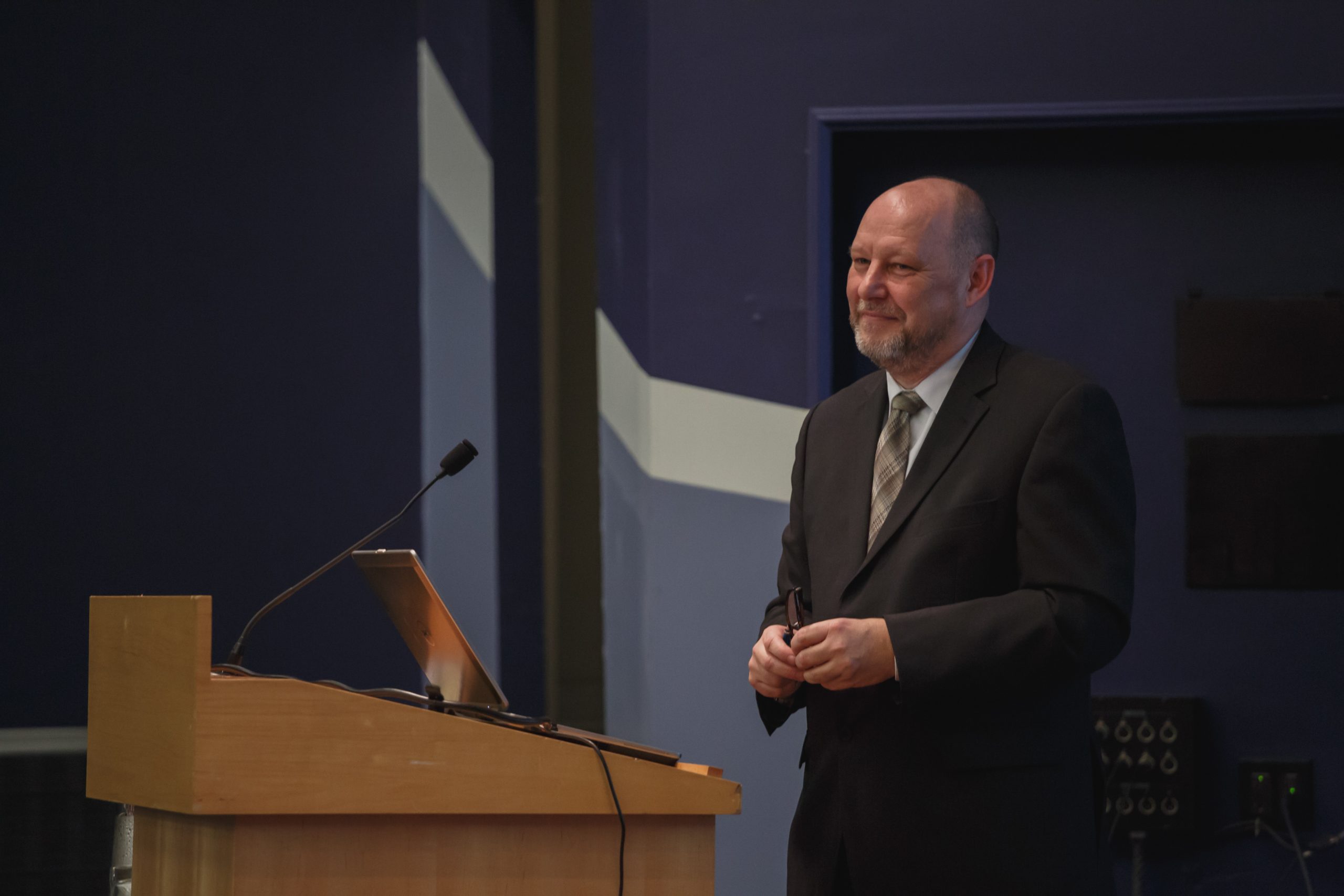Dementia: New Paths to Understanding
Marion Woodward Lecture with John Keady
In November 1901 a woman was admitted to Frankfurt Insane Asylum with a weakening of the memory, persecution mania, sleeplessness, restlessness, inability to perform any physical and mental work, and needing treatment from the local mental institution. The doctor’s first assessment of his new patient stated that when asked to write her name, she could begin correctly with “Frau” (Mrs) but the rest she had forgotten. Although she was reminded that her name was Auguste Deter, she remained confused and did not know how to continue. Instead, she repeated, “I have lost myself.” Auguste Deter died in the asylum of sepsis on April 8, 1906 at the age of 56 years. Curious at finding these familiar symptoms in one so young, her doctor performed an autopsy in which he examined her brain, identified the hallmark plaques and tangles that now define this form of dementia, and determined the condition was primarily biomedical. The disease was named after doctor and researcher, Alois Alzheimer, and, as Dr John Keady puts it, “the newest medical adventure was born.” This famous case retains carefully recorded elements revealing an ordinary life played out. Dr Keady observes, “this is an exceptionally important case study because it is essentially the story of all our lives.”
Dr Keady is the Nursing Professor of Older People’s Mental Health at the University of Manchester and the Greater Manchester West Mental Health NHS Foundation Trust. He is also our most recent Marion Woodward Lecturer, having addressed a full house on October 27, 2016 on the topic of “Dementia: New Paths to Understanding.” He tells us that he was first introduced to people with dementia during his initial nursing assignment on the men’s ward at the Essex County Lunatic Asylum and Mental Hospital in the 1980s. The trappings of the Daffodil Ward included tilted chairs, TVs placed high on the wall, and highly polished floors, which were standard sights in British institutions of the time. It was in this stark environment that Dr Keady’s interest in caring for people with dementia was nurtured.
In the 1980s, as his interest was developing, the main nursing intervention for dementia was to preserve and maintain patients’ social appearance. No specific drugs or therapies to treat dementia were offered, although new interventions such as psychogeriatrics and reality orientation were beginning to emerge. The main message that young Nurse Keady received was that patients’ quality of life couldn’t be improved and it was useless to attempt it. Writings as recent as 1982 described dementia as a “tragic disorder, as if the true self dies before the body and in intervening years the patient’s character disintegrates noisily and without dignity into chaos.”
Given the bleak prognosis, even the mental health nurses weren’t supposed to enjoy the experience of working with people with dementia, but Dr Keady loved it. He discovered his paths to understanding through the varied means by which people with dementia were trying to make sense of the world around them. He was fascinated by the diverse perspectives and challenges experienced by each individual he met. Although he had been trained mostly in the physical care of these people, he connected with them on a deeper level and these first relationships with people with dementia helped him decide to spend the rest of his life giving something back to this field of study. He returned to university to extend his knowledge and begin what has been 33 years of research so far.
With his colleagues, Dr Keady’s continuing work calls him to restore the humanity to dementia care, in particular by connecting communities to dementia patients and their “informal carers.” His Marion Woodward Lecture is filled with examples of research that works, and even in at least one case, research that didn’t. The research teams include the usual array of researchers (PhD students, co-investigators, Post-Docs), but also included are people who have received diagnoses of dementia themselves, working in partnership to design and deliver interventions and research projects that enhance connections within communities.
As we, the community members, engage with people with dementia, Dr Keady reminds us to consider the whole story of each person we meet. From the Journal of Dementia Care, he quotes an article written 100 years after Auguste Deter’s death, which plumbs the hospital records to reveal how she had been a fully realized person with a fulfilling life before dementia, including a child and a husband who visited frequently and struggled to pay for her care. “It describes a story not of a brain, but of human beings, a family, and great love,” says Dr Keady. “That’s the kind of story that has been missing from dementia care for many, many years.”
Dr John Keady’s fascinating lecture with references is available in its entirety online at http://ikblc.ubc.ca/john-keady-dementianew-paths-to-understanding/ (1:02:28)
Teaser: https://youtu.be/UQ8vMCSKKXw (00:03:00)
The Marion Woodward Lecture is made possible through the generous support of the Mr and Mrs P. A. Woodward’s Foundation
